Outdoor Play Area - Making it Safe for Your Kids
Creating a safe outdoor play area for your kids is not just about having swings and slides; it’s about crafting an environment where they can explore, learn, and grow without unnecessary risks. Imagine a space where laughter echoes and imaginations run wild, but with safety measures in place that give you peace of mind. This article dives into essential tips and guidelines to ensure that your outdoor play area is not only engaging but also a sanctuary where children can play freely and safely. After all, what’s more precious than watching your little ones enjoy the great outdoors while knowing they’re protected from potential hazards?
Understanding the significance of safety in outdoor play areas is crucial for preventing accidents and injuries. Just think about it: kids are naturally curious and adventurous. They want to climb, jump, and explore every corner of their playground. However, without proper safety measures, this adventurous spirit can lead to unfortunate accidents. When children feel secure in their play environment, they can focus on having fun and making friends, rather than worrying about getting hurt. Safety isn’t just a checkbox; it’s a foundational aspect of their play experience. By prioritizing safety, you are not only protecting them but also instilling a sense of responsibility and awareness about their surroundings.
Selecting an appropriate location for your outdoor play area can significantly impact safety, accessibility, and enjoyment. It’s not just about finding an empty space; you need to consider various factors that make a location ideal. For instance, think about the terrain—are there any steep slopes or uneven surfaces? Proximity to hazards like roads or water bodies is also critical. You want to ensure that your kids can run and play without the constant worry of nearby dangers. Visibility is another key factor; can you easily see your children while they play? A well-chosen location can transform a simple play area into a safe haven for your little explorers.
The type of ground surface in a play area plays a vital role in cushioning falls. When kids are running around, falls are inevitable. That’s why exploring various options for ground surfaces is essential. From soft grass to cushy mulch or even rubber mats, each material has its benefits. For instance, grass might feel natural and inviting, but mulch can provide better shock absorption. It’s all about finding the right balance between aesthetics and safety. Here’s a quick comparison of popular ground surfaces:
| Ground Surface | Shock Absorption | Maintenance Level |
|---|---|---|
| Grass | Moderate | Low |
| Mulch | High | Medium |
| Rubber Mats | Very High | Low |
Soft ground cover materials provide better shock absorption during falls, significantly reducing the risk of injuries. Think of it this way: if you were to fall, would you prefer to land on a hard surface or a soft, cushy one? Soft ground covers like rubber mats or mulch can make all the difference in the world. They can turn a potentially painful fall into a minor bump, allowing kids to bounce back up and continue their adventures. Understanding the different materials available can help you make informed choices for your play area, ensuring that safety is always a priority.
Regular maintenance of ground surfaces is essential to ensure their effectiveness. Just like any other part of your home, your outdoor play area needs attention too! This includes checking for wear and tear, replacing damaged materials, and keeping surfaces clean and free of debris. A well-maintained ground surface not only looks inviting but also performs better in protecting your kids from injuries. So, make it a habit to inspect the area periodically, ensuring that it remains a safe place for exploration and play.
Ensuring that play equipment meets safety standards is crucial for minimizing risks. Familiarizing yourself with guidelines and regulations can help you choose safe and age-appropriate equipment for children. Look for certifications from recognized safety organizations, and don’t hesitate to ask questions when purchasing new equipment. Remember, the right equipment can enhance the fun and keep your kids safe at the same time!
Active supervision is vital when children are playing outdoors. It’s not enough to just set up the play area; you need to be present, keeping an eye on the little ones as they engage in their adventures. Establishing clear guidelines and rules can help ensure that kids play safely while enjoying their time in the outdoor area. Think of yourself as the captain of their ship, guiding them through the waters of play while keeping them safe from potential storms.
Establishing simple play rules can help children understand safe behaviors while playing, promoting a culture of safety and responsibility among young explorers. For example, rules like “no pushing” or “take turns” can create a more harmonious environment. When kids understand the expectations, they’re more likely to play safely, reducing the likelihood of accidents.
Encouraging children to engage in safe play practices, such as sharing equipment and playing gently, fosters a positive environment and reduces the likelihood of accidents. It’s all about teaching them that play can be fun without being reckless. By instilling these values early on, you’re not just ensuring safety today; you’re also shaping responsible and considerate individuals for the future.
- What are the safest ground surfaces for a play area?
Soft ground covers like rubber mats and mulch provide excellent shock absorption and are ideal for preventing injuries. - How often should I inspect the play area?
Regular inspections should be conducted at least once a month, with immediate checks after severe weather events or heavy use. - What age-appropriate equipment should I consider?
Always choose equipment that is designed for your child's age group, as this ensures safety and proper use.

Importance of Safety in Outdoor Play Areas
This article explores essential tips and guidelines for ensuring that outdoor play areas are safe, engaging, and enjoyable for children, promoting healthy physical activity and social interaction.
When it comes to children playing outdoors, safety should always be the top priority. Imagine a world where your little ones can run, jump, and explore without a care in the world—this is what a safe outdoor play area can offer. By understanding the significance of safety in these spaces, we can prevent accidents and injuries, allowing children to engage freely in their adventures. Just think about it: every scraped knee or bumped head could be avoided with the right precautions in place.
Outdoor play areas serve as essential environments for physical activity and social interaction. However, they can also pose risks if not properly managed. Children are naturally curious and often unaware of potential dangers around them. This is why creating a safe play area is not just about avoiding injuries; it’s about fostering an environment where kids can feel secure and confident to explore their surroundings. In fact, a well-designed play area can encourage children to engage in active play, which is crucial for their physical and emotional development.
Moreover, the importance of safety extends beyond just the physical aspect; it also encompasses emotional well-being. When children know they are in a safe environment, they are more likely to take risks in their play, engage with peers, and develop essential social skills. This is where the role of parents and caregivers becomes vital. By actively participating in the creation and maintenance of safe play areas, adults can instill a sense of responsibility and awareness in children about their surroundings.
As we delve deeper into the factors that contribute to a safe outdoor play area, consider the following key elements:
- Proper Ground Surfaces: Ensuring that the ground is cushioned can significantly reduce injury risks.
- Safe Equipment: All play equipment should meet safety standards to prevent accidents.
- Active Supervision: Keeping an eye on children while they play is essential for safety.
Ultimately, prioritizing safety in outdoor play areas not only protects children from harm but also enriches their play experience. It allows them to enjoy their time outdoors while developing crucial life skills. So, let’s take the necessary steps to create safe, engaging, and fun play areas for our kids!
Selecting an appropriate location for your outdoor play area can significantly impact safety, accessibility, and enjoyment, making it essential to consider factors like terrain, proximity to hazards, and visibility.
The type of ground surface in a play area plays a vital role in cushioning falls. Exploring various options, such as grass, mulch, and rubber mats, can enhance safety for active play.
Soft ground cover materials provide better shock absorption during falls, reducing the risk of injuries. Understanding the different materials can help you make informed choices for your play area.
Regular maintenance of ground surfaces is essential to ensure their effectiveness. This includes checking for wear and tear, replacing damaged materials, and keeping surfaces clean and free of debris.
Ensuring that play equipment meets safety standards is crucial for minimizing risks. Familiarizing yourself with guidelines and regulations can help you choose safe and age-appropriate equipment for children.
Active supervision is vital when children are playing outdoors. Establishing clear guidelines and rules can help ensure that kids play safely while enjoying their time in the outdoor area.
Establishing simple play rules can help children understand safe behaviors while playing, promoting a culture of safety and responsibility among young explorers.
Encouraging children to engage in safe play practices, such as sharing equipment and playing gently, fosters a positive environment and reduces the likelihood of accidents.
Q: What are the best materials for ground surfaces in play areas?
A: The best materials include grass, mulch, and rubber mats, as they provide cushioning and reduce the risk of injuries during falls.
Q: How can I ensure that play equipment is safe?
A: Regularly check for wear and tear, ensure that equipment meets safety standards, and supervise children while they play.
Q: Why is supervision important in outdoor play areas?
A: Supervision helps prevent accidents and ensures that children are following safety rules while engaging in play.
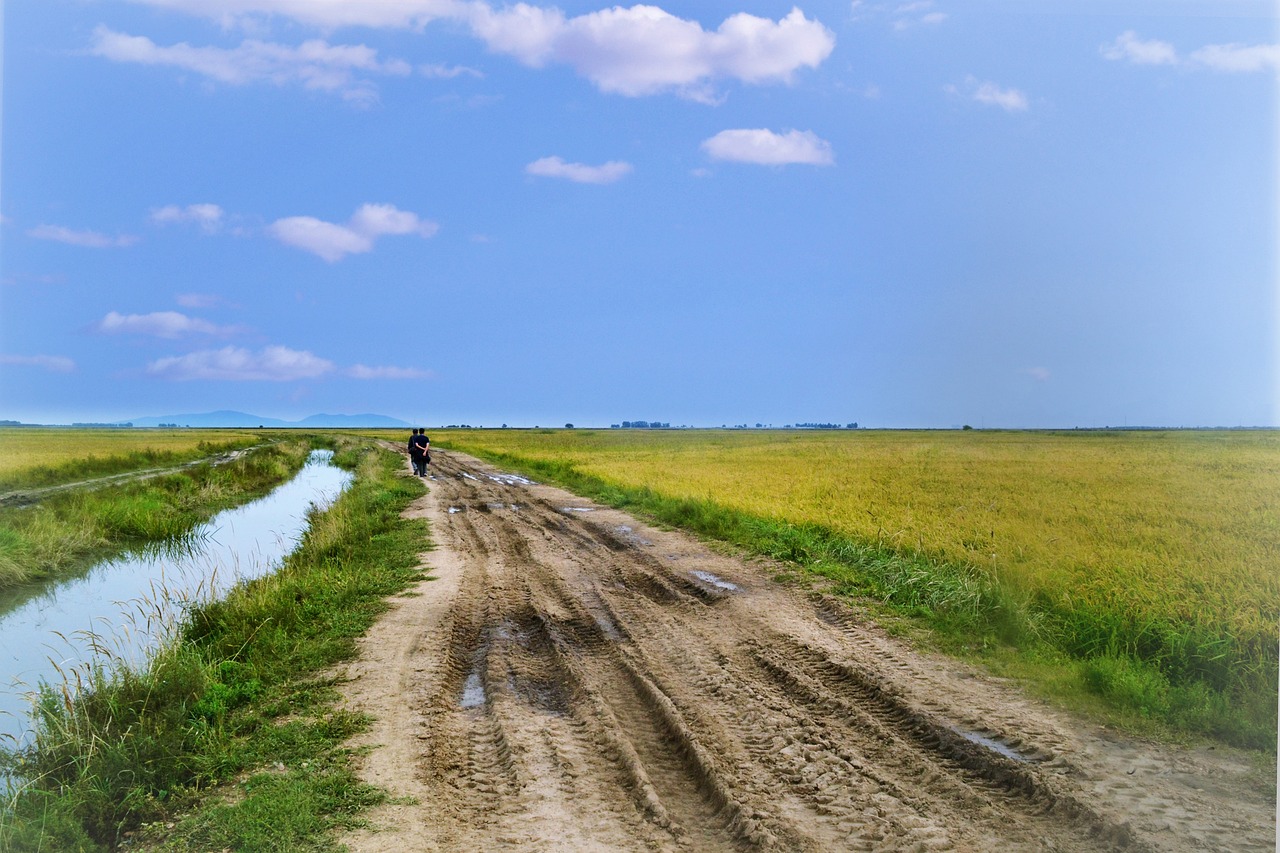
Choosing the Right Location
When it comes to creating a safe and enjoyable outdoor play area for your kids, is absolutely critical. Imagine your child running around, laughing and playing, but suddenly tripping over an uneven surface or getting too close to a busy street. Yikes! That’s not the kind of adventure we want for our little explorers. So, what should you consider when picking the perfect spot for their playground?
First off, terrain matters. A flat, even surface is ideal for setting up play equipment. If the area is sloped or uneven, it could lead to falls and injuries. Safety first! Look for a location that has minimal hazards like rocks, tree roots, or thorny bushes. You want your kids to have a blast without worrying about what’s lurking beneath their feet.
Next, think about proximity to hazards. Is the play area near a busy road, a swimming pool, or a steep hill? These are dangerous spots that can turn a fun day into a scary one in an instant. Ideally, the play area should be set back from such risks, providing a buffer zone where children can play freely without the constant threat of accidents. It’s all about creating a safe haven for them to unleash their energy!
Another important factor is visibility. You want to be able to keep an eye on your little ones as they play. Choose a location that allows for clear sightlines, so you can easily monitor their activities. This is especially important if you have multiple kids playing at once. If you can’t see them, how can you ensure they’re playing safely? A good vantage point can give you peace of mind while they enjoy their outdoor adventures.
Lastly, consider the accessibility of the location. Is it easy for kids to get to the play area? Are there safe paths for them to walk or ride their bikes? Ensuring that the area is accessible not only promotes physical activity but also encourages kids to explore and socialize with friends. Remember, a play area that’s hard to reach may lead to fewer playdates and less outdoor fun.
In summary, when choosing the right location for your outdoor play area, keep these key factors in mind:
- Terrain: Look for flat, even ground.
- Hazards: Stay away from busy roads and dangerous spots.
- Visibility: Ensure you can see the play area easily.
- Accessibility: Make sure it’s easy for kids to get there.
By taking the time to choose the right location, you’re not just setting up a play area; you’re creating a safe, fun environment where your kids can thrive and make lasting memories. So, go ahead and scout out the perfect spot, and watch as your children embark on countless adventures in their new outdoor paradise!

Assessing Ground Surfaces
When it comes to creating a fun and safe outdoor play area, one of the most critical aspects to consider is the ground surface. The ground beneath our children's feet can make a world of difference, especially when it comes to cushioning falls and preventing injuries. Imagine a child tumbling off a swing; if they land on a hard surface like concrete, the consequences can be severe. However, if they fall onto a softer surface, the impact is significantly lessened, allowing them to bounce back and continue their playtime adventure. Therefore, assessing ground surfaces is not just about aesthetics; it’s about ensuring a safe environment for our little explorers.
There are several types of ground surfaces to consider, each with its own advantages and disadvantages. Here’s a quick breakdown:
| Ground Surface Type | Benefits | Considerations |
|---|---|---|
| Grass | Natural look, soft landing | Can become muddy, requires maintenance |
| Wood Mulch | Good shock absorption, eco-friendly | May require replenishing, can attract pests |
| Rubber Mats | Durable, low maintenance | Higher initial cost, can get hot in the sun |
| Sand | Soft and fun for digging | Can create a mess, may require regular raking |
In addition to the type of surface, it’s crucial to assess the depth of the cushioning material. According to safety guidelines, a depth of at least 12 inches is recommended for loose-fill materials like mulch or sand. This depth helps to absorb the impact effectively, providing a safer landing for children. It's also important to regularly inspect the ground surface for any wear and tear. Over time, materials can become compacted or displaced, reducing their effectiveness. Ensuring that the ground cover is evenly distributed and adequately maintained is key to keeping the play area safe.
Furthermore, consider the slope and drainage of the area. A well-drained play area will prevent water from pooling, which can lead to mud and slippery conditions, making it hazardous for little feet. Flat areas are generally safer, but slight slopes can provide exciting challenges for older kids. Just remember, safety should always come first!
In summary, assessing ground surfaces is a fundamental step in creating a safe outdoor play area. By choosing the right materials, maintaining them regularly, and considering drainage and slope, you can create an environment where children can play freely and safely. After all, when kids are free to explore without the worry of injury, their imaginations can truly soar!
- What is the best ground surface for a play area?
It depends on your specific needs, but options like rubber mats and wood mulch are popular for their shock absorption and safety features. - How often should I check the ground surfaces?
Regular inspections should be conducted at least once a month, or more frequently after heavy use or adverse weather conditions. - Can I mix different ground surfaces?
Yes, mixing surfaces can create a unique play environment, but ensure that transitions between surfaces are smooth to prevent tripping hazards.

Benefits of Soft Ground Cover
This article explores essential tips and guidelines for ensuring that outdoor play areas are safe, engaging, and enjoyable for children, promoting healthy physical activity and social interaction.
Understanding the significance of safety in outdoor play areas is crucial for preventing accidents and injuries, ensuring children can explore and play freely without unnecessary risks.
Selecting an appropriate location for your outdoor play area can significantly impact safety, accessibility, and enjoyment, making it essential to consider factors like terrain, proximity to hazards, and visibility.
The type of ground surface in a play area plays a vital role in cushioning falls. Exploring various options, such as grass, mulch, and rubber mats, can enhance safety for active play.
When it comes to creating a safe outdoor play area, the choice of ground cover is absolutely critical. Soft ground cover materials, such as mulch, rubber mats, and grass, provide significant advantages that can help protect your children during playtime. Think of these materials as the safety net for your child's adventures. Here are some of the key benefits:
- Shock Absorption: Soft ground covers are designed to absorb impact, which is essential when children tumble or fall. This cushioning effect can significantly reduce the risk of injuries, especially for younger kids who are still mastering their coordination.
- Comfort: Playing on a softer surface is inherently more comfortable for children. Whether they're running, jumping, or just sitting down for a break, a soft ground cover makes the experience more enjoyable.
- Natural Drainage: Many soft ground covers, such as mulch and grass, allow for better water drainage. This means that even after a rain shower, the play area remains safe and usable, preventing muddy or slippery conditions that could lead to accidents.
- Environmentally Friendly Options: Many soft ground covers are made from recycled materials or organic substances, making them a sustainable choice for eco-conscious families. You can create a safe play area while also being kind to the planet!
Ultimately, the benefits of opting for soft ground cover cannot be overstated. Not only does it provide a safer environment for children, but it also enhances their overall play experience. Imagine your kids laughing and playing without a care in the world, knowing that they are cushioned by a soft, protective layer beneath them.
Regular maintenance of ground surfaces is essential to ensure their effectiveness. This includes checking for wear and tear, replacing damaged materials, and keeping surfaces clean and free of debris.
Ensuring that play equipment meets safety standards is crucial for minimizing risks. Familiarizing yourself with guidelines and regulations can help you choose safe and age-appropriate equipment for children.
Active supervision is vital when children are playing outdoors. Establishing clear guidelines and rules can help ensure that kids play safely while enjoying their time in the outdoor area.
Establishing simple play rules can help children understand safe behaviors while playing, promoting a culture of safety and responsibility among young explorers.
Encouraging children to engage in safe play practices, such as sharing equipment and playing gently, fosters a positive environment and reduces the likelihood of accidents.
Q: What is the best ground cover for a play area?
A: The best ground cover often depends on your specific needs, but options like rubber mats and mulch are popular due to their excellent shock absorption and safety features.
Q: How often should I inspect the play area?
A: It's a good idea to inspect the play area at least once a month, or more frequently if it's heavily used. Look for signs of wear, debris, and any potential hazards.
Q: What should I do if I find damaged equipment?
A: If you find damaged equipment, it should be taken out of use immediately until it can be repaired or replaced. Safety should always come first!
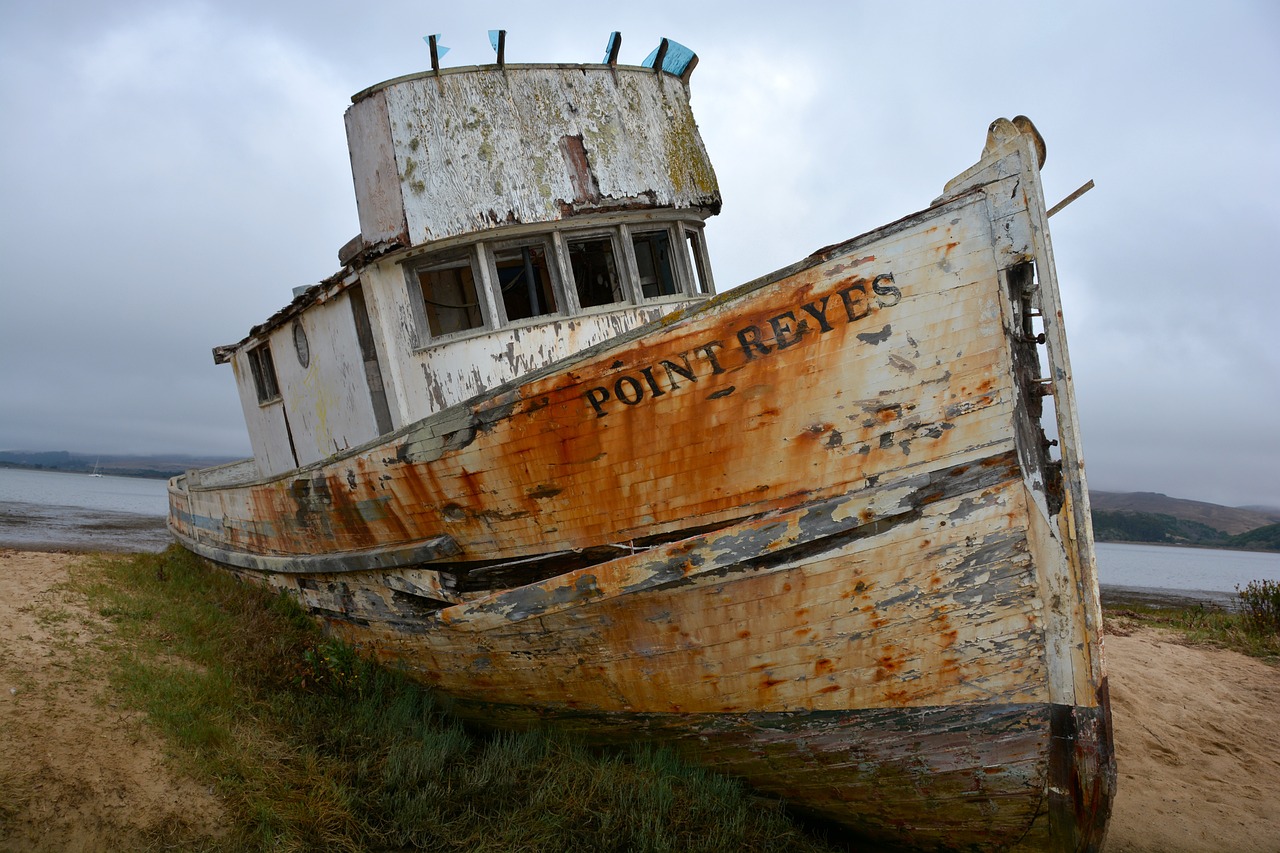
Maintenance of Ground Surfaces
This article explores essential tips and guidelines for ensuring that outdoor play areas are safe, engaging, and enjoyable for children, promoting healthy physical activity and social interaction.
Understanding the significance of safety in outdoor play areas is crucial for preventing accidents and injuries, ensuring children can explore and play freely without unnecessary risks.
Selecting an appropriate location for your outdoor play area can significantly impact safety, accessibility, and enjoyment, making it essential to consider factors like terrain, proximity to hazards, and visibility.
The type of ground surface in a play area plays a vital role in cushioning falls. Exploring various options, such as grass, mulch, and rubber mats, can enhance safety for active play.
Soft ground cover materials provide better shock absorption during falls, reducing the risk of injuries. Understanding the different materials can help you make informed choices for your play area.
Regular maintenance of ground surfaces is essential to ensure their effectiveness. Just like you wouldn't drive a car with worn-out tires, you shouldn't let your children's play area fall into disrepair. This involves a few key practices that can make a world of difference:
- Inspection: Regularly inspect the ground surfaces for any signs of wear and tear. Look for uneven areas, holes, or any materials that may have shifted out of place.
- Cleaning: Keep the play area clean and free of debris. This includes removing leaves, branches, and other objects that could pose a tripping hazard.
- Replacement: If you notice that certain materials, like mulch or rubber mats, are deteriorating, it’s time to replace them. This will not only enhance safety but also maintain the aesthetic appeal of the play area.
Moreover, it’s beneficial to establish a maintenance schedule. For example, you could set aside time every month to conduct a thorough check of the play area. This proactive approach will help you catch potential issues before they escalate into safety hazards.
Lastly, don't forget to involve the kids in the maintenance process. Teaching them about the importance of a safe play environment can instill a sense of responsibility and care for their surroundings. After all, a well-maintained play area is not just a safe zone; it's a thriving space for adventure and fun!
Ensuring that play equipment meets safety standards is crucial for minimizing risks. Familiarizing yourself with guidelines and regulations can help you choose safe and age-appropriate equipment for children.
Active supervision is vital when children are playing outdoors. Establishing clear guidelines and rules can help ensure that kids play safely while enjoying their time in the outdoor area.
Establishing simple play rules can help children understand safe behaviors while playing, promoting a culture of safety and responsibility among young explorers.
Encouraging children to engage in safe play practices, such as sharing equipment and playing gently, fosters a positive environment and reduces the likelihood of accidents.
Q1: How often should I inspect the outdoor play area?
A1: It's recommended to inspect the play area at least once a month, or more frequently if it's heavily used.
Q2: What materials are best for ground surfaces?
A2: Soft materials such as rubber mats, mulch, or grass are excellent choices as they provide cushioning for falls.
Q3: How can I involve my children in maintaining the play area?
A3: You can turn maintenance tasks into fun activities, such as a cleaning day where kids help pick up debris or check the equipment.
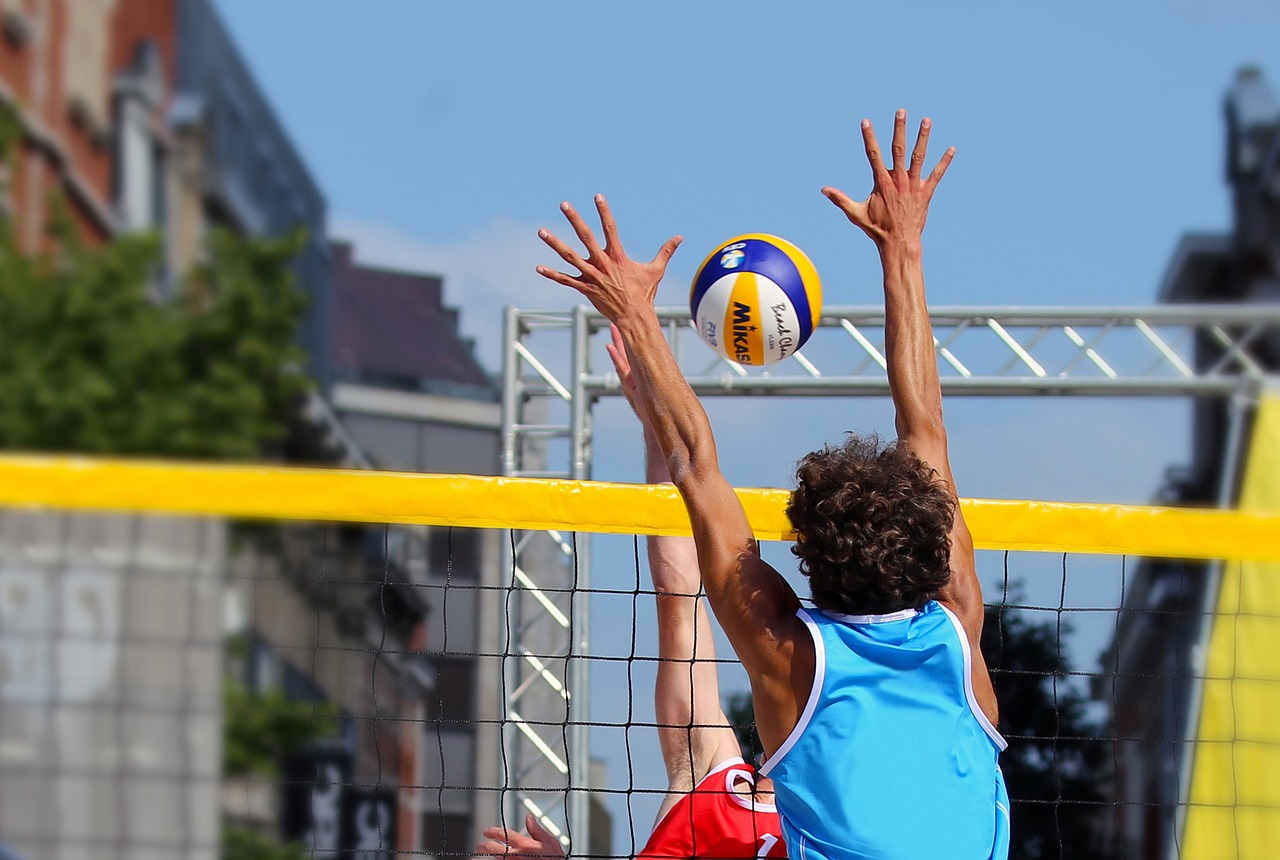
Equipment Safety Standards
When it comes to ensuring a safe outdoor play area for your kids, should be at the forefront of your considerations. These standards are designed to minimize risks and ensure that play equipment is both safe and appropriate for children's use. Familiarizing yourself with these guidelines can feel like deciphering a secret code, but it's essential for keeping your little adventurers safe while they explore and play.
First and foremost, it's crucial to understand that not all play equipment is created equal. Manufacturers and regulatory bodies have established certain benchmarks that equipment must meet to be deemed safe. This includes factors such as the height of slides, the spacing of swings, and the sturdiness of climbing structures. Each piece of equipment should be designed to accommodate the age and developmental stage of the children who will be using it. For instance, a climbing frame suitable for toddlers would differ significantly from one meant for older children.
Moreover, the materials used in constructing play equipment are equally important. Look for equipment made from durable, non-toxic materials that can withstand the elements and rough play. For example, metal equipment should be rust-resistant, and wooden structures should be treated to prevent splinters and decay. Always check for labels or certifications that indicate compliance with safety standards set by organizations such as the American Society for Testing and Materials (ASTM) or the Consumer Product Safety Commission (CPSC).
It's also wise to consider the layout of the play area when installing equipment. Ensure that there is ample space between different pieces of equipment to prevent collisions and accidents. A good rule of thumb is to have a minimum of 6 feet of clearance around swings and slides. This not only enhances safety but also allows for a more enjoyable play experience where children can move freely without fear of bumping into one another.
In addition to the physical aspects of equipment, supervision plays a vital role in maintaining safety standards. Even the safest equipment can become a hazard without proper monitoring. Parents and caregivers should remain vigilant, encouraging children to use equipment as intended and adhering to established play rules. This active involvement helps foster a culture of safety and responsibility among young explorers.
To further assist you in understanding these safety standards, here’s a quick overview of some key considerations:
| Equipment Type | Safety Standard Considerations |
|---|---|
| Slides | Height limits, smooth edges, and proper landing zones |
| Swings | Spacing, height from the ground, and secure attachments |
| Climbing Structures | Stability, appropriate height, and safety barriers |
By staying informed about equipment safety standards and regularly inspecting the play area, you can create a fun and secure environment that encourages children to engage in physical activity and social interaction. Remember, a safe play area is not just about preventing injuries; it's about fostering a sense of adventure and freedom for your kids to explore their world without fear.
- What are the most important safety standards for outdoor play equipment? - The most crucial standards include ensuring that equipment is age-appropriate, made from durable materials, and installed with adequate spacing to prevent accidents.
- How often should I inspect the play equipment? - It's advisable to conduct regular inspections at least once a month and after any major weather events to ensure everything is in good condition.
- What should I do if I find damaged equipment? - Any damaged equipment should be immediately taken out of use and repaired or replaced to maintain safety.

Supervision and Guidelines for Parents
When it comes to outdoor play, supervision is not just a good idea—it's a necessity! Imagine this: your kids are outside, laughing and playing, but without your watchful eye, how can you be sure they're safe? Active supervision means being present, engaged, and ready to step in when necessary. It’s about creating an environment where children can explore freely while knowing that their safety is your priority. This doesn’t mean hovering over them like a helicopter parent; rather, it’s about being close enough to intervene if things get a bit too wild.
Establishing clear guidelines and rules is another essential aspect of ensuring safety in outdoor play areas. Kids thrive on structure, and having a set of simple, easy-to-understand rules can make all the difference. For example, you might say, “No pushing on the swings,” or “Take turns on the slide.” These rules not only promote safe behaviors but also instill a sense of responsibility among young explorers. When children understand what is expected of them, they are more likely to adhere to these guidelines, leading to a more harmonious playtime experience.
Moreover, it’s crucial to encourage safe play practices. This involves teaching children to share equipment and play gently. Think of it like a dance: each child has a role to play, and when everyone is considerate of one another, the dance flows smoothly. You can foster this environment by praising good behavior and gently correcting unsafe actions. For instance, if you see a child running too close to the swings, a quick reminder to walk can prevent potential accidents. By reinforcing positive behaviors, you help create a culture of safety that benefits everyone.
In addition to supervision and guidelines, consider organizing playdates or group activities. Not only does this provide children with social interaction, but it also allows for shared supervision among parents. When multiple adults are present, it’s easier to keep an eye on the kids, and it creates a sense of community. Plus, it’s a great way to build friendships among both parents and children!
Lastly, remember that safety is a continuous conversation. Regularly check in with your kids about their play experiences. Ask them questions like, “What did you enjoy today?” or “Did anything happen that made you feel uncomfortable?” This not only shows that you care but also opens the door to discussions about safety in a non-threatening way. By keeping the lines of communication open, you empower your children to express their feelings and concerns, making outdoor play a more enjoyable experience for everyone involved.
- How can I ensure my child's safety while playing outdoors? Active supervision, establishing clear rules, and encouraging safe play practices are key.
- What should I do if I see unsafe behavior? Address it immediately with a gentle reminder of the rules and encourage safer alternatives.
- Are there specific guidelines for outdoor play equipment? Yes, ensure all equipment meets safety standards and is age-appropriate.
- How often should I check the play area for hazards? Regular checks, ideally before each play session, can help identify and mitigate risks.
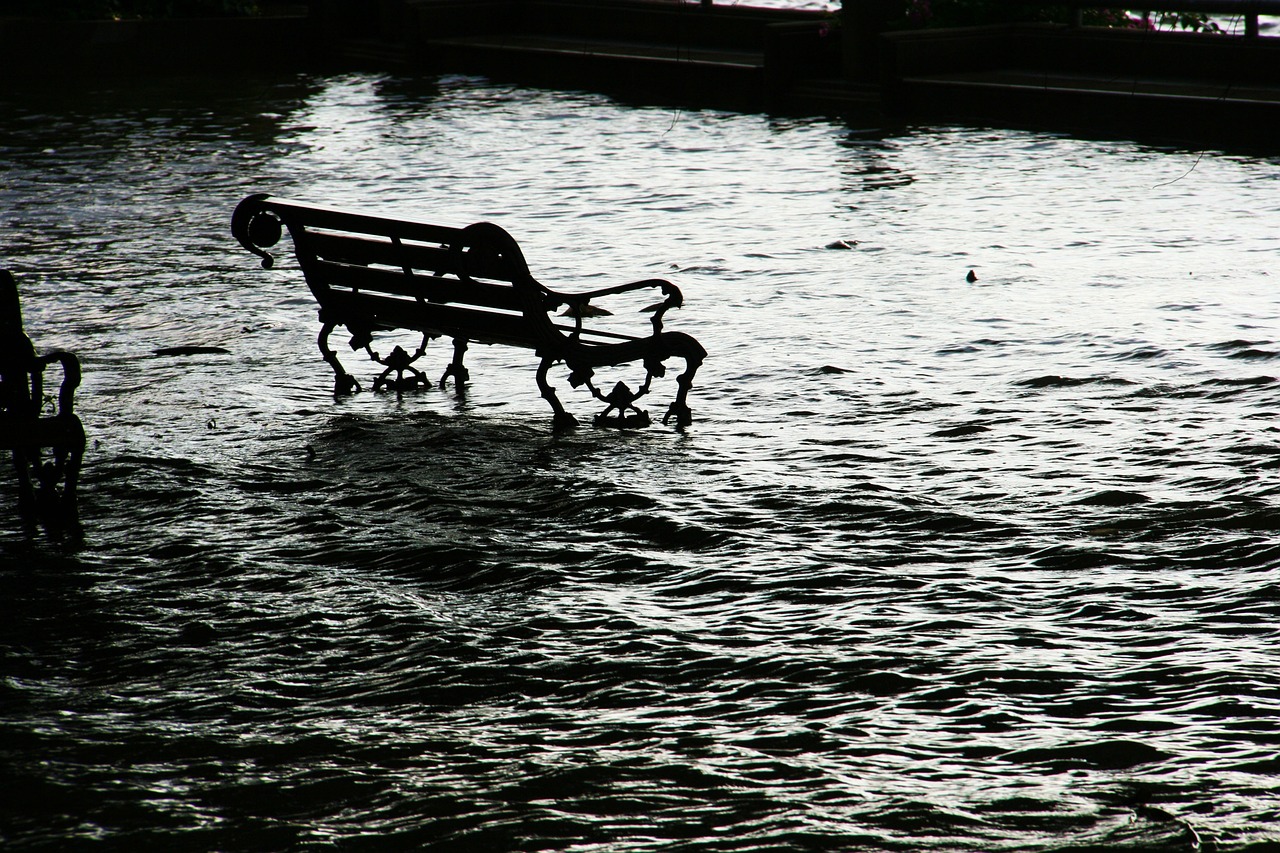
Creating Play Rules
Establishing clear and simple play rules is an essential step in fostering a safe environment for children in outdoor play areas. Think of these rules as the guiding stars that help young explorers navigate their adventures without veering off course into potential hazards. When children understand what is expected of them, they are more likely to engage in safe behaviors, allowing them to enjoy their playtime to the fullest.
One effective approach to creating play rules is to involve the children in the process. Ask them what they think should be included in the rules. This not only empowers them but also makes them more likely to adhere to the guidelines. For example, you can have a discussion about sharing equipment, taking turns, and respecting others' space. Here are some key points to consider when formulating these rules:
- Keep it Simple: Use clear and concise language that children can easily understand. Avoid complex terminology that might confuse them.
- Be Specific: Instead of saying "play safely," specify what that means. For instance, "no pushing or shoving" or "wait your turn on the slide."
- Positive Framing: Frame rules positively to encourage good behavior. Rather than saying "don't run," you could say "walk carefully to avoid falls."
Once the rules are established, it's crucial to display them prominently in the play area. You can create a colorful poster or sign that outlines the rules in a fun and engaging way. This visual reminder serves as a constant cue for children to remember how to play safely.
Additionally, regular reinforcement of these rules is vital. Take a few moments during playtime to remind children about the importance of following the guidelines. You might say, "Remember to take turns on the swings!" This not only keeps safety at the forefront of their minds but also encourages accountability among peers.
Lastly, be sure to model the behavior you want to see. Children learn a lot by observing adults. If you demonstrate respectful and safe play, they are more likely to mimic that behavior. Creating a culture of safety and responsibility in outdoor play areas is not just about rules; it's about fostering an environment where children feel secure and are encouraged to explore, learn, and grow together.
Q1: What are some examples of effective play rules?
A1: Effective play rules include guidelines like "no pushing or shoving," "wait your turn," and "share equipment." These rules help promote a safe and enjoyable environment.
Q2: How can I get my child to follow the play rules?
A2: Involve your child in creating the rules, display them prominently, and regularly reinforce them during playtime. Modeling the desired behavior yourself also encourages adherence.
Q3: Should play rules be adjusted as children grow?
A3: Yes! As children grow and develop new skills, it's important to revisit and adjust the play rules to ensure they remain relevant and effective.
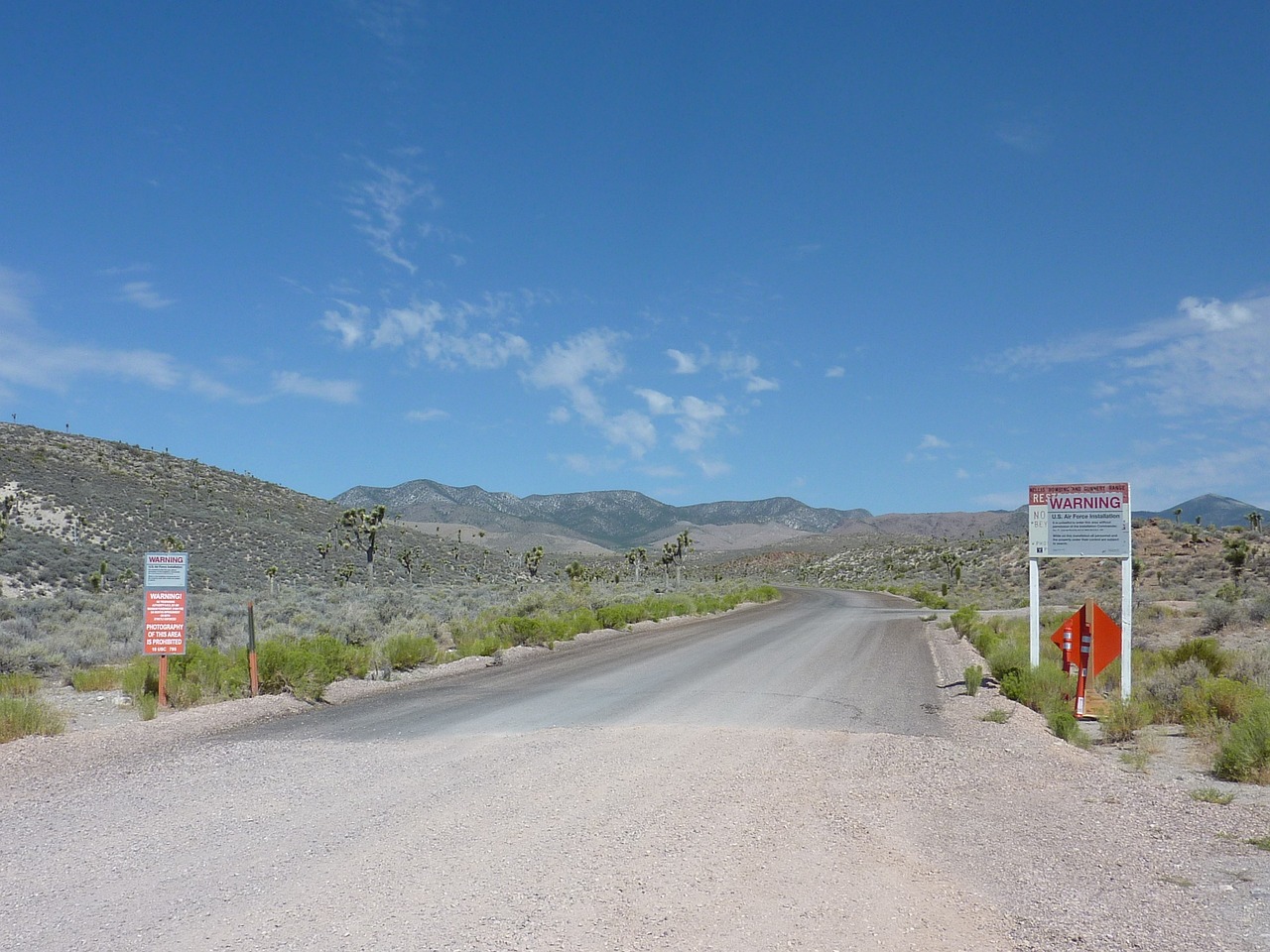
Encouraging Safe Play Practices
When it comes to outdoor play, is a cornerstone of ensuring that children have fun while minimizing risks. Imagine a bustling playground where laughter fills the air, but amidst the joyous chaos, it's essential to instill a sense of safety. Parents and guardians can play a pivotal role in this by actively promoting safe behaviors. One of the most effective ways to do this is through consistent communication with children about the importance of safety during playtime.
Start by having a friendly chat with your kids about what it means to play safely. You might say, "Hey, remember how we talked about sharing the swings? It’s not just about being nice; it’s also about keeping everyone safe!" This kind of dialogue helps children understand that safety is not just a set of rules, but a way to ensure everyone enjoys their time together. You can also create a playground agreement that outlines safe behaviors, which can be a fun activity. This agreement can include points like:
- Taking turns on equipment to avoid overcrowding.
- Using equipment for its intended purpose only.
- Being mindful of others and keeping personal space.
- Reporting any broken equipment to an adult immediately.
Additionally, modeling safe behaviors is crucial. Children often learn by example, so when they see adults practicing safety—like wearing helmets while biking or using equipment correctly—they’re more likely to mimic those actions. It’s not just about telling them what to do; it’s about showing them how it’s done. You can turn this into a fun game by saying, "Let’s see who can remember the most safety rules while we play!" This engages them and reinforces the message.
Moreover, it’s essential to encourage children to look out for one another. Teaching kids to be good friends means helping each other stay safe. You can say, "If you see someone playing too rough, it’s okay to remind them to be gentle." This not only promotes safety but also fosters teamwork and community spirit among young explorers.
Finally, remember that safety is a continuous conversation. Regularly check in with your kids about their experiences during playtime. Ask them questions like, "Did you have fun today? Was there anything that felt unsafe?" This feedback loop helps you understand their perspective and allows you to address any concerns they may have. By creating an environment where children feel comfortable discussing safety, you empower them to take charge of their own well-being while enjoying the great outdoors.
Q: How can I ensure my child understands the importance of safe play?
A: Regular conversations about safety, combined with modeling safe behaviors and creating a fun agreement, can help children understand and value safe play.
Q: What should I do if I notice unsafe behavior among children?
A: Address the behavior calmly and remind the children of the safety rules. Encourage them to communicate with each other about safe play practices.
Q: Are there specific safety rules for different age groups?
A: Yes, safety rules can vary based on age. Younger children may need more guidance on using equipment, while older kids can be encouraged to take responsibility for their actions.
Frequently Asked Questions
- What are the key safety considerations for outdoor play areas?
When it comes to outdoor play areas, safety is paramount! Key considerations include ensuring a soft ground surface to cushion falls, selecting equipment that meets safety standards, and choosing a location away from hazards like roads or water bodies. Regular maintenance of both the equipment and ground surfaces is also crucial to prevent accidents.
- How can I choose the right location for a play area?
Choosing the right location is like picking the perfect spot for a picnic! Look for areas that are flat and free of obstacles. Make sure it’s easily visible from your home, so you can keep an eye on the kids while they play. Avoid places near busy streets or potential hazards, ensuring a safe and enjoyable environment for your little ones.
- What types of ground surfaces are best for safety?
Soft ground surfaces are your best friends when it comes to safety! Options like grass, mulch, and rubber mats provide excellent shock absorption during falls. Each option has its benefits, but rubber mats are particularly great for their durability and ease of maintenance. Choose what fits your needs best!
- How often should I maintain the play area?
Think of maintenance like giving your car a tune-up! Regular checks are essential; ideally, you should inspect the play area weekly. Look for wear and tear on the equipment and ground surfaces, clean up debris, and replace any damaged materials promptly. This keeps the play area safe and inviting!
- What should I look for in play equipment?
When choosing play equipment, safety standards are your guiding light! Ensure that the equipment is age-appropriate and meets local safety regulations. Look for sturdy construction, non-toxic materials, and features that prevent entrapment or falls. Always prioritize safety to keep the fun rolling!
- How can I supervise my children effectively while they play?
Supervision is like being the captain of a ship—you need to keep an eye on everything! Stay nearby and engage with your kids as they play. Set clear play rules and encourage safe practices, like sharing and playing gently. This not only keeps them safe but also helps them develop social skills!
- What are some good play rules to establish?
Creating play rules is like drawing a treasure map for safe adventures! Keep the rules simple and clear, such as taking turns, using equipment properly, and no pushing or rough play. Discuss these rules with your children to ensure they understand and feel responsible for their actions while having fun.
- How can I encourage safe play practices among children?
Encouraging safe play is like nurturing a garden—you need to cultivate it! Lead by example and demonstrate safe behaviors yourself. Praise your children when they play nicely and share, reinforcing positive actions. Create an atmosphere where safety is a priority, and watch them thrive in their adventures!



















